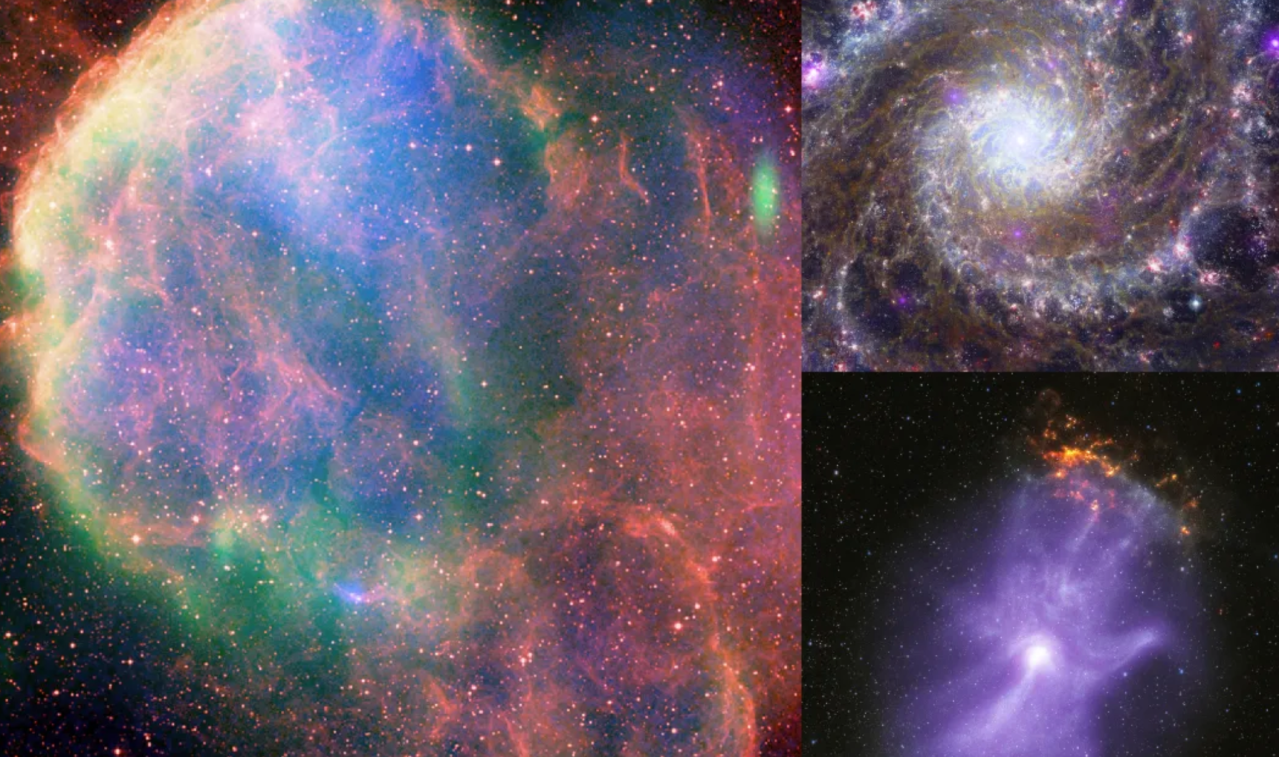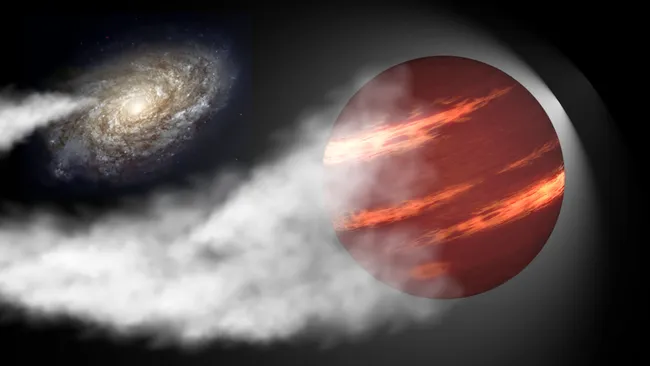NASA's Roman Telescope to Search for Dark Matter Clumps
Some of the finest, tiniest details in the universe — the spaces between elongated groups of stars — could soon help astronomers reveal dark matter in greater detail than ever before. Following the launch of NASA’s Nancy Grace Roman Space Telescope in May 2027, researchers will use its images to explore what lies between the curving curls of stars being ejected from globular clusters. Specifically, they will focus on the tidal streams coming from globular clusters orbiting our neighboring Andromeda galaxy. Their goal is to identify more examples of these tidal streams, examine the spaces between stars, and, ideally, determine the specific properties of dark matter.

Globular cluster streams are like ribbons that ripple through the cosmos, traveling in front of and behind the globular clusters where these streams originated along their orbits. Their lengths in our Milky Way galaxy vary widely. Very short stellar streams are relatively young, while those that completely envelop a galaxy can be nearly as old as the universe. A stream that completely envelops the Andromeda galaxy could be more than 300,000 light-years long, but less than 3,000 light-years wide.
With the Roman telescope, astronomers will be able to search for star streams from globular clusters in nearby galaxies for the first time. Roman's wide-field instrument has 18 detectors that will produce images 200 times larger than the Hubble Space Telescope's near-infrared camera, with slightly higher resolution.
“Roman will be able to capture a huge panoramic image of the Andromeda galaxy, which is simply not possible with any other telescope,” said Christian Aganze, lead author of a recent paper on the topic and a postdoc at Stanford University in California. “We also project that Roman will be able to detect individual stars.”
Imagine the results: Roman's vast, exquisitely detailed images will allow researchers to easily identify many examples of globular cluster streams in Andromeda. To date, astronomers using existing space- and ground-based telescopes have been limited to studying a somewhat smaller number of globular cluster streams within our Milky Way galaxy.

Image: NASA, NASA-GSFC, ASU, Robert Gendler DSS; Simulation: NASA, STScI, Benjamin F. Williams (University of Washington)
The huge footprint of the wide-field instrument on the upcoming Nancy Grace Roman Space Telescope shows how much its camera could observe in a single image. (The wide-field instrument has 18 square detectors.) Inside this footprint is a simulated image of Roman. The background is a ground-based image of the main disk of the Andromeda galaxy taken by the Digital Sky Survey. For scale, a photo of the full Moon taken by NASA's Lunar Reconnaissance Orbiter is provided. Andromeda is about three degrees across the sky, while the Moon is about 0.5 degrees across. (In reality, the Moon is much smaller than Andromeda, but it's also much closer.) The wide-field instrument footprint captures 0.28 square degrees of the sky in a single shot. Andromeda is a spiral galaxy that is similar in size and structure to our Milky Way, but it is more massive. It is located about 2.5 million light-years from Earth.
Dark matter, which many assume is a particle, cannot yet be observed directly because it does not emit, reflect, refract or absorb light. If we can’t see it, how do we know it’s there? “We see the effect of dark matter in galaxies,” Aganze said. “For example, when we model how galaxies rotate, we need additional mass to explain their rotation. Dark matter can provide that missing mass.”
Every galaxy, including the Milky Way, is surrounded by a halo of dark matter. As astronomers learn more about the nature of dark matter, they may find evidence that a galaxy’s halo can also contain a large number of smaller dark matter subhalos, which are predicted by models. “These halos are probably roughly spherical, but their density, size, and even whether they exist are currently unknown,” said co-author Tjitske Starkenburg, a research assistant professor at Northwestern University in Evanston, Illinois.
Roman will refine his search. “We expect dark matter to interact with the globular cluster streams. If these subhalos are present in other galaxies, we predict that we will see gaps in the globular cluster streams that are likely caused by dark matter,” Starkenburg continued. “This will give us new information about dark matter, including what types of dark matter halos are present and what their masses are.”
Aganze and Starkenburg estimate that Roman will efficiently transmit the data they need into nearby galaxies—taking only a total of about an hour—and that these observations could be captured with Roman's High Latitude Wide Area Survey.
Starkenburg will also help lay the groundwork for this research through his contributions to another project recently selected for funding by NASA’s Nancy Grace Roman Space Telescope Research Opportunities and Support program. “This team plans to model how globular clusters form in stellar streams by developing a much more detailed theoretical framework,” he explained. “We will follow up with a prediction of where the globular clusters that form the streams originate and whether these streams will be observable with Roman.”
Aganze is also excited about other projects that are currently online or will soon be online. “The European Space Agency’s Euclid mission is already beginning to explore the large-scale structure of the universe, which will help us learn more about the role of dark matter,” he said. “And the Vera C. Rubin Observatory will soon repeatedly scan the night sky with similar goals. Data from these missions will be incredibly useful in constraining our simulations as we prepare for Roman.”
The Nancy Grace Roman Space Telescope is managed from NASA’s Goddard Space Flight Center in Greenbelt, Maryland, with participation from NASA’s Jet Propulsion Laboratory (JPL) and Caltech/IPAC in Southern California, the Space Telescope Science Institute (STScI) in Baltimore, and a science team consisting of scientists from a variety of research institutions. Major industry partners are Ball Aerospace and Technologies Corporation in Boulder, Colorado; L3Harris Technologies in Melbourne, Florida; and Teledyne Scientific & Imaging in Thousand Oaks, California.







